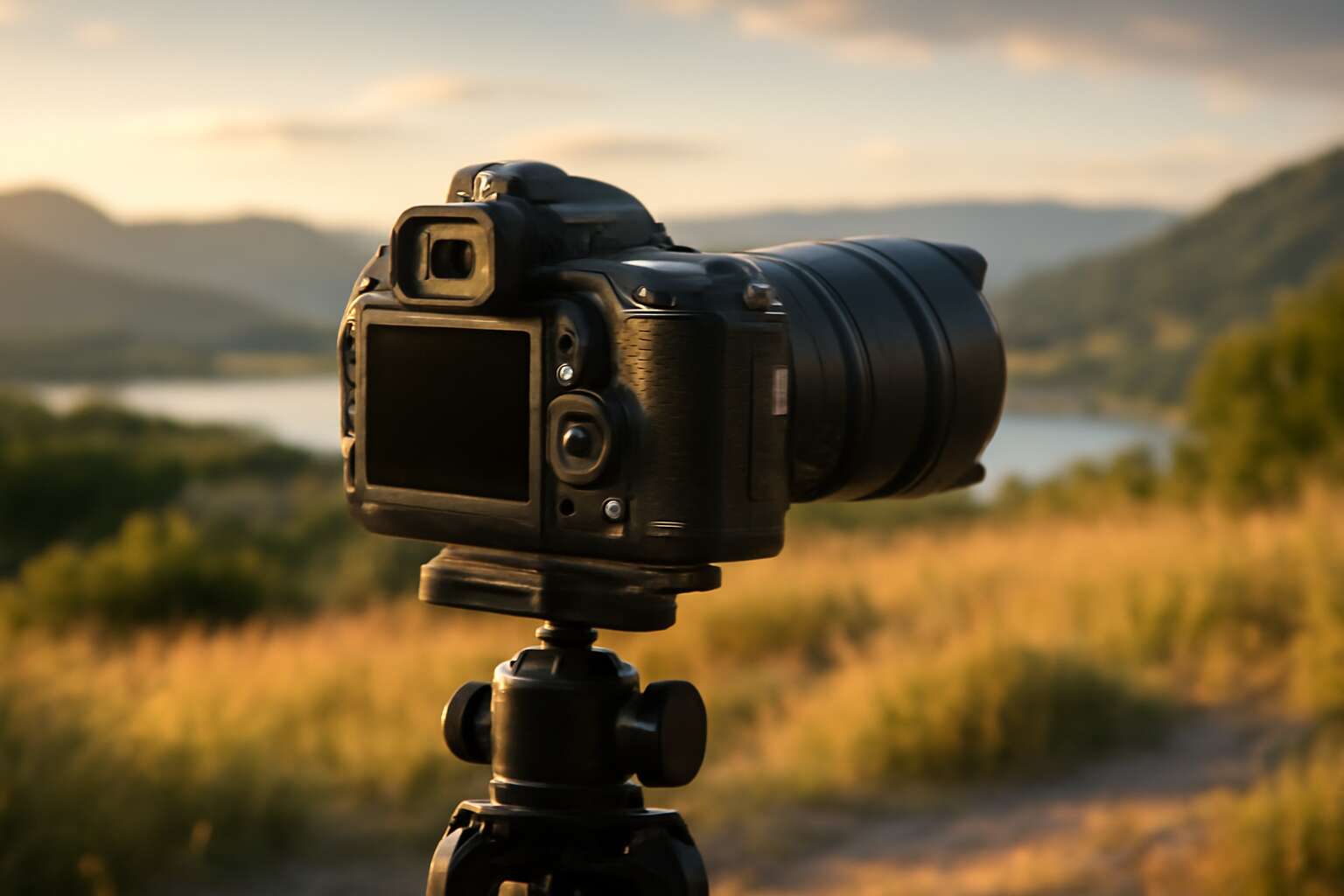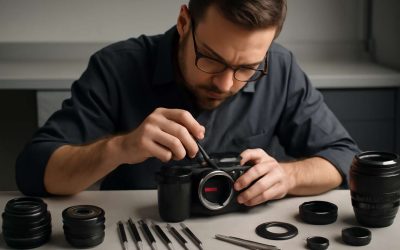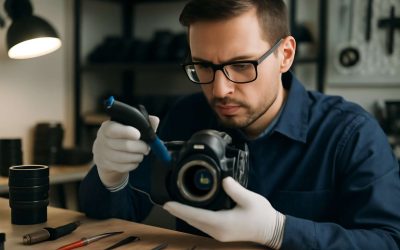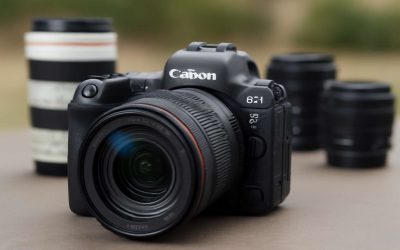Understanding DSLR Cameras
What is a DSLR Camera?
In a world captivated by instant images and fleeting moments, the DSLR camera and lens stand as timeless tools for capturing life’s intricate details. A DSLR, or Digital Single-Lens Reflex camera, offers unrivaled control over your photography, blending advanced technology with intuitive handling. Its hallmark is the mirror mechanism that allows photographers to see exactly what the lens sees through the optical viewfinder, ensuring precise framing and focus. This makes it an essential device for both professionals and passionate hobbyists eager to elevate their craft.
What truly sets a DSLR camera and lens apart is the ability to interchange lenses, adapting to diverse shooting conditions. Whether you’re exploring the vibrant streets of Johannesburg or the serene landscapes of the Drakensberg, the versatility of a high-quality lens can transform your creative vision into stunning reality. As photographers seek sharper images and better low-light performance, understanding the nuances of different lenses becomes crucial—making the DSLR camera a gateway to endless possibilities.
Key Features of DSLR Cameras
In the realm of digital photography, the DSLR camera and lens emerge as an artist’s most loyal companions—melding technology with poetic nuance. One of its key features is the ability to control exposure, focus, and depth of field with exquisite precision, transforming fleeting moments into timeless images. The optical viewfinder, a window to the world through the lens, offers a clarity that digital screens often struggle to match, allowing photographers to anticipate the final masterpiece before pressing the shutter. This tactile connection to the craft is what makes DSLR cameras indispensable for those who seek mastery over their vision.
Furthermore, the heart of a DSLR camera and lens lies in its versatility. Interchangeable lenses open a universe of possibilities, from capturing sweeping landscapes to intimate portraits. Each lens, with its unique focal length and aperture, behaves like a brushstroke—adding depth, drama, and emotion to every shot. Whether you’re exploring the vibrant streets of Johannesburg or the tranquil vistas of the Drakensberg, understanding the nuances of different lenses can elevate your photographic storytelling to new heights.
Advantages Over Other Camera Types
When it comes to capturing the essence of a moment with clarity and precision, DSLR cameras stand apart from other camera types. Unlike compact point-and-shoots or mirrorless models, a DSLR camera and lens offer a level of control that can transform an ordinary shot into a work of art. The optical viewfinder provides an unfiltered, real-time view—something digital screens often struggle to replicate—making every framing decision feel instinctive and deliberate.
One of the most compelling advantages of a DSLR camera and lens is its exceptional adaptability. With an extensive range of interchangeable lenses, photographers can seamlessly shift from wide-angle landscapes to detailed macro shots or striking portraits. This versatility is unmatched in other camera types, allowing for a more nuanced storytelling approach. For example, a telephoto lens can bring distant wildlife into sharp focus, while a prime lens excels in low-light conditions—each adding depth and drama to your visual narrative.
In essence, the combination of advanced optical mechanics and customizable accessories makes a DSLR camera and lens the preferred choice for professionals and enthusiasts alike. Its ability to excel in diverse shooting environments underscores its enduring relevance in the ever-evolving landscape of digital photography.
Popular DSLR Camera Brands
When it comes to choosing a DSLR camera and lens, familiarity with popular brands can make all the difference—think of it as the difference between a trusted steed and a temperamental mule. South African photographers, whether capturing the wild beauty of the Kruger or the vibrant cityscapes of Johannesburg, often turn to brands with reputation and reliability. Among these, Canon and Nikon reign supreme, offering a broad spectrum of DSLR camera and lens options tailored to every skill level and budget.
Other notable contenders include Sony, with its innovative mirrorless technology, and Pentax, cherished by those who prefer ruggedness and weather sealing. Here’s a quick rundown of some of the most popular DSLR camera brands:
- Canon: Known for its user-friendly interface and extensive lens ecosystem, Canon’s DSLR camera and lens lineup caters to beginners and pros alike.
- Nikon: Praised for its superb image quality and durability, Nikon offers a range of DSLR camera and lens options perfect for capturing South Africa’s diverse landscapes.
- Pentax: For those who love adventure, Pentax’s rugged build and weather-sealed bodies make it a favorite among outdoor enthusiasts.
- Sony: Although primarily celebrated for mirrorless cameras, Sony’s DSLR offerings hold their own, especially with cutting-edge autofocus technology.
Choosing the right brand often comes down to personal preference and specific needs, but one thing’s certain—investing in a quality DSLR camera and lens from a reputable manufacturer ensures your images will stand the test of time, whether you’re snapping wildlife or city life.
Choosing the Right DSLR Camera
Factors to Consider
Choosing the right DSLR camera and lens is an artful dance between vision and precision, a symphony of specifications that must harmonize with your creative soul. With countless options swirling like a desert mirage, discerning the ideal setup requires a keen eye for detail and a deep understanding of your photographic ambitions.
Consider the sensor size—full-frame sensors offer a cinematic depth of field, perfect for capturing South Africa’s sprawling landscapes or intimate portraits. The autofocus system, another vital factor, determines how effortlessly your camera follows fleeting moments, whether it’s a cheetah in the savannah or a bustling street scene.
For those seeking versatility, a balanced DSLR camera and lens kit can elevate your artistry, combining durability with optical excellence. Remember, the choice of lens—be it a wide-angle for sweeping vistas or a telephoto for distant wildlife—can transform your images from mere snapshots to compelling stories.
Entry-Level vs. Professional DSLR Cameras
Embarking on the journey to choose the perfect DSLR camera and lens can feel like navigating a wildlife reserve—exciting, unpredictable, and sometimes a little overwhelming. The decision often boils down to your experience level and photographic aspirations. For beginners, an entry-level DSLR camera offers simplicity, affordability, and enough features to spark your creative fire without drowning in technical jargon. Think of it as a trusty Jeep—robust, easy to handle, and capable of taking you on countless adventures.
On the other hand, seasoned enthusiasts or professional photographers in South Africa often gravitate toward professional DSLR cameras—those beasts with weather-sealed bodies, rapid autofocus, and expansive ISO ranges. These cameras are designed to capture wildlife in the harshest conditions or subtle moments in bustling urban scenes. The key is matching your DSLR camera and lens choice to your vision: a wide-angle lens for sweeping savannah vistas or a telephoto for those elusive big cats lurking in the bushveld.
Best DSLR Cameras for Beginners
Choosing the right DSLR camera for beginners is akin to selecting a trusted companion for your photographic journey—one that balances ease of use with potential for growth. In South Africa’s diverse landscape, a reliable dslr camera and lens can unlock the beauty of everything from the rugged bushveld to vibrant urban streets. The best DSLR cameras for beginners often feature intuitive controls, compact design, and versatile image quality that encourages experimentation.
Opting for models with a comfortable grip and quick access to essential settings can make all the difference. Additionally, a good starter dslr camera and lens kit usually includes a standard zoom lens, providing flexibility across various genres, whether capturing wildlife or candid moments. This combination ensures that new photographers can develop their skills without feeling overwhelmed, setting a solid foundation for future exploration in photography’s expansive universe.
Top Choices for Advanced Photographers
In the realm of professional photography, selecting the right DSLR camera and lens can be likened to choosing a finely tailored suit—precision and purpose matter. Advanced photographers often seek models that offer robust control over settings, superior image quality, and exceptional low-light performance. South Africa’s diverse environments—from sweeping savannahs to bustling cityscapes—demand a versatile DSLR camera and lens combo that adapts seamlessly.
Top choices for seasoned shutterbugs often include models with full-frame sensors, fast autofocus, and extensive ISO ranges, ensuring every shot captures the essence of the moment. When hunting for a DSLR camera and lens that elevate your craft, consider these critical features:
- High-resolution sensors for crisp detail
- Weather sealing for rugged outdoor adventures
- Compatibility with a wide array of prime and zoom lenses
Ultimately, the ideal DSLR camera and lens for advanced photographers balances technical prowess with intuitive ergonomics, making each photographic expedition both inspiring and effortless. After all, in the hands of a skilled photographer, a well-chosen DSLR camera and lens can transform everyday scenes into extraordinary visual stories.
Understanding DSLR Camera Lenses
Types of DSLR Lenses
In the grand theater of photography, the DSLR camera and lens act as the masterful actors, each playing a crucial role in capturing life’s fleeting moments with precision and artistry. Understanding the different types of DSLR lenses unlocks a realm of creative possibilities, transforming simple snapshots into compelling visual stories. From the sweeping vistas of the South African savannah to intimate portraits in Cape Town’s bustling streets, the right lens can elevate every shot.
There are several categories of DSLR lenses, each designed to serve specific artistic visions. Prime lenses, renowned for their sharpness and wide apertures, are perfect for low-light conditions and portraits. Zoom lenses offer versatility, allowing seamless framing from wide-angle landscapes to close-up details without changing your equipment. Specialty lenses, such as macro or fisheye, add unique perspectives that challenge conventional boundaries and ignite innovation.
To navigate this spectrum, consider these key types of DSLR lenses:
- Standard lenses, epitomizing natural perspective and balance
- Wide-angle lenses, capturing expansive scenes with a dramatic sense of space
- Telephoto lenses, bringing distant subjects into sharp focus, ideal for wildlife and sports photography
Choosing the right DSLR camera and lens combination is an art in itself, blending technical mastery with an eye for storytelling—an alchemy that transforms ordinary moments into timeless memories.
Lens Mounts and Compatibility
Understanding DSLR camera lenses begins with recognizing the significance of lens mounts and compatibility. A DSLR camera and lens operate as an intricate dance, where precision fit and seamless communication determine the quality of your capture. Each camera brand—be it Canon, Nikon, or Sony—boasts a specific lens mount system, acting as the gateway through which lenses connect to the camera body. This compatibility is crucial; a mismatch can hinder autofocus, image stabilization, or even prevent attachment altogether.
For enthusiasts and professionals alike, appreciating the nuances of lens mounts fosters smarter choices. Many manufacturers offer an array of lenses tailored to their mount systems, yet third-party options are increasing in popularity, adding versatility and affordability. To avoid costly mistakes, it’s wise to consider the lens mount compatibility before investing in a new dslr camera and lens combination, ensuring your creative journey remains unhindered by technical barriers.
Important Lens Specifications
Understanding the nuances of DSLR camera lenses can elevate your photography from mere snapshots to compelling visual stories. At its core, the importance of lens specifications cannot be overstated; they serve as the blueprint for achieving specific artistic effects and technical precision. For instance, aperture size influences depth of field, while focal length determines the framing and perspective of your shot. Recognizing these details helps photographers select the right dslr camera and lens for their unique needs.
One of the most critical aspects to consider is the lens’s optical quality, including elements like sharpness and chromatic aberration. As technology advances, manufacturers increasingly offer features such as image stabilization and fast autofocus, which significantly enhance image clarity and ease of use. When choosing a lens, keep an eye on specifications like maximum aperture, focal length, and compatibility—these are the pillars that support your creative journey with a dslr camera and lens.
Ultimately, understanding these important lens specifications transforms the way photographers approach their craft, allowing for more intentional and inspired captures. Whether shooting landscapes in South Africa’s vast wilderness or portraits in urban settings, a well-chosen lens magnifies your creative potential and ensures your DSLR setup remains a versatile tool for years to come.
Choosing the Right Lens for Your Photography Style
Choosing the right DSLR camera and lens is more than a technical decision; it’s an exploration of your artistic soul. Every photographer, whether capturing the sprawling savannahs of South Africa or intimate city portraits, must consider how their lens shapes perception. The lens acts as the gateway to your vision, transforming fleeting moments into timeless stories.
Understanding your photography style is crucial. Do you chase wide vistas or intimate details? For landscapes, a wide-angle lens with a large maximum aperture can bring expansive scenes into sharp focus. Conversely, portraiture demands lenses that soften backgrounds, emphasizing emotion and connection. Recognizing these nuances allows you to select a DSLR camera and lens that truly align with your creative voice.
Remember, the magic often lies in the details—focal length, aperture, and optical quality. Your choice influences everything from depth of field to image stability. Embrace the complexity; it’s where true artistry begins. Whether venturing into the wilds or urban jungles, the right DSLR camera and lens set will remain your steadfast companions, amplifying your innate vision and pushing the boundaries of what’s possible.
Popular DSLR Camera and Lens Combinations
Entry-Level Bundle Options
In the vibrant tapestry of photography, certain DSLR camera and lens combinations stand as timeless duets, captivating both novices and seasoned artisans alike. Among the popular choices, the Canon EOS Rebel T8i paired with an 18-55mm kit lens often emerges as the quintessential entry-level bundle—perfect for those eager to dip their toes into the world of DSLR photography. Meanwhile, Nikon’s D3500, accompanied by a versatile 18-55mm lens, remains a steadfast favorite, offering an elegant balance of affordability and performance.
For a more advanced yet accessible experience, the Canon EOS 90D combined with a 24-105mm lens provides expansive creative freedom, capturing moments with exquisite detail and clarity. These trusted DSLR camera and lens combinations serve as gateways into the art of storytelling through imagery. When selecting a bundle, consider those that include a durable body and a flexible lens, enabling the photographer to navigate various scenes and lighting conditions seamlessly.
- Canon EOS Rebel T8i with 18-55mm lens
- Nikon D3500 with 18-55mm kit lens
- Canon EOS 90D with 24-105mm lens
Professional-Grade Setups
In the grand theatre of visual storytelling, certain DSLR camera and lens combinations stand as the virtuoso’s choice, whispering promises of clarity and depth with every click. Among the professional-grade setups, the Canon EOS 5D Mark IV paired with a versatile 24-70mm lens embodies a symphony of precision and adaptability, perfect for capturing the intricate dance of light and shadow. Likewise, the Nikon D850 with a 24-120mm lens offers unparalleled resolution and flexibility, enabling photographers to mold their creative visions into tangible reality.
For those seeking a harmonious blend of power and finesse, the Sony A9 II paired with a 70-200mm lens is a formidable duo, ideal for wildlife or sports photography where fleeting moments demand unwavering focus. Such professional-grade setups elevate the artistry of DSLR photography, transforming fleeting seconds into timeless images. When selecting a dslr camera and lens, it’s essential to consider not only the technical prowess but also how this dynamic duo aligns with your unique storytelling style.
Best Lenses for Portrait Photography
For portrait photography, the allure of capturing human emotion with clarity and grace is unparalleled. The best lenses for portrait photography are those that caress the subject with a gentle blur, creating a dreamy separation from the background. A popular choice among professionals is the 85mm prime lens, renowned for its exquisite bokeh and flattering perspective. These lenses tend to produce images where every detail feels intimate yet refined, highlighting the soul behind each gaze.
When paired with a high-quality dslr camera and lens, such as the Canon EF 85mm f/1.4 or Nikon 85mm f/1.8, photographers unlock a world of artistic potential. These lenses excel in low-light conditions and deliver sharpness with a velvety depth, essential for capturing the nuanced expressions that define portraiture. For those seeking versatility, a 70-200mm zoom lens can offer a range of framing options, all while maintaining exceptional image quality. With such combinations, every portrait becomes a timeless masterpiece—an enduring testament to the power of a well-chosen dslr camera and lens.
Ideal Lenses for Landscape Photography
When venturing into the captivating world of landscape photography, the right combination of a DSLR camera and lens can transform a simple scene into a breathtaking masterpiece. South African vistas, with their rugged mountains and sprawling plains, demand equipment that can handle diverse lighting and expansive compositions. Popular DSLR camera and lens combinations for landscape photography often include wide-angle lenses paired with high-resolution DSLR cameras, allowing photographers to capture intricate details of the environment while maintaining vivid clarity.
For those seeking the perfect toolkit, versatile lenses like the 16-35mm or 24-70mm zooms are ideal. They provide flexibility in framing expansive panoramas or intimate nature shots without sacrificing image quality. Additionally, using a sturdy tripod and filters can further enhance the clarity and depth of your images, especially during sunrise or sunset when light is most enchanting. Whether exploring the Drakensberg or the Cape Winelands, a well-chosen dslr camera and lens open doors to limitless creative possibilities in landscape photography.
Macro Photography Lenses
In the shadowy realm of macro photography, where every minuscule detail whispers its secrets, choosing the right DSLR camera and lens becomes a ritual of devotion. Macro lenses, renowned for their ability to unveil the unseen, transform ordinary subjects into intricate tapestries of texture and form. South Africa’s diverse flora and fauna—each a delicate enigma—demand equipment that can capture their fragile beauty with precision and clarity.
Popular DSLR camera and lens combinations for macro photography often feature dedicated macro lenses, such as the 100mm or 105mm prime, paired with high-resolution DSLR bodies. These lenses allow you to explore a realm where the faintest dewdrop or the intricate veins of a leaf reveal themselves in stunning detail. Whether you’re capturing the haunting beauty of a spider’s web at dawn or the tiny marvels nestled within a desert bloom, your choice of equipment can make all the difference.
- Opt for lenses with a 1:1 magnification ratio to ensure true macro capabilities.
- Look for a sturdy, weather-sealed DSLR camera and lens, perfect for South Africa’s unpredictable climate.
- Combine these tools with a ring flash or macro lighting to intensify shadows and highlight minute textures.
In the darkness of the macro world, where shadows dance and secrets lurk, the right dslr camera and lens can unveil an entirely new universe—one that beckons the curious and the brave to peer closer into the mysteries of nature’s smallest miracles.
Maintaining and Upgrading Your DSLR Equipment
Proper Care and Maintenance
Investing in a DSLR camera and lens is only the beginning; proper care and maintenance are essential to preserve their performance and extend their lifespan. Dust, dirt, and moisture can silently undermine the delicate internals of your equipment, leading to costly repairs or replacements down the line. Regular cleaning with appropriate tools, such as a blower and microfiber cloth, ensures that your lens remains crystal clear and free of smudges that can compromise image quality.
Maintaining your DSLR camera and lens also involves thoughtful storage. Always keep them in a padded, dry case when not in use, preferably in a climate-controlled environment, especially in South Africa’s varying weather conditions. Additionally, periodically check and update firmware to boost functionality and security. For those looking to upgrade, consider the compatibility of new lenses with your existing DSLR camera and lens setup, ensuring a seamless transition that preserves your photographic integrity.
When to Upgrade Your Camera or Lens
When it comes to maintaining your DSLR camera and lens, patience truly is a virtue—especially given South Africa’s capricious weather. A sudden downpour or dusty veld can turn your prized possession into a paperweight overnight. Regularly inspecting and cleaning your DSLR camera and lens with specialized tools like a blower and microfiber cloth is the secret sauce to keeping images crisp and clear. Dust and dirt are the mortal enemies of sharpness, but with a little TLC, they’re easily kept at bay.
But at some point, even the most devoted shutterbug must consider an upgrade. Knowing when to upgrade your DSLR camera or lens hinges on your evolving photographic ambitions. If you find yourself yearning for better low-light performance or faster autofocus, it might be time to take the plunge. An upgrade isn’t just about chasing the latest tech—it’s about enhancing your creative potential. Consider factors like sensor resolution, compatibility with existing lenses, and the overall ergonomics of your gear. After all, a well-matched upgrade can transform your photographic journey from good to legendary.
Accessories to Enhance Your DSLR Experience
Maintaining your DSLR camera and lens is like giving your photographic partner a spa day—an occasional pampering session keeps it performing at peak levels. Dust, dirt, and the relentless South African dust storms are the sneaky saboteurs of image sharpness, so regular cleaning with specialized tools like a blower and microfiber cloth is essential. Think of it as a gentle nudge to your gear, ensuring every shot remains crisp and vibrant, no matter the weather tantrums.
But let’s face it—there comes a time when your beloved DSLR camera and lens need a bit of a boost. Upgrading isn’t just about flaunting the latest tech; it’s about unlocking new creative horizons. Whether it’s better low-light performance or faster autofocus, an upgrade can turn your hobby into an art form. Carefully consider sensor resolution, compatibility with your existing lenses, and ergonomics—because a well-matched DSLR camera and lens combo can elevate your photography from good to legendary.
To make your upgrade journey smoother, keep an eye on the accessories that complement your gear. Quality filters, sturdy tripods, and a reliable camera bag aren’t just extras—they’re essentials that safeguard your investment. Remember, maintaining and upgrading your DSLR equipment accessories isn’t just about protection; it’s about enhancing your entire photography experience, ensuring each shot is a masterpiece waiting to happen.




0 Comments